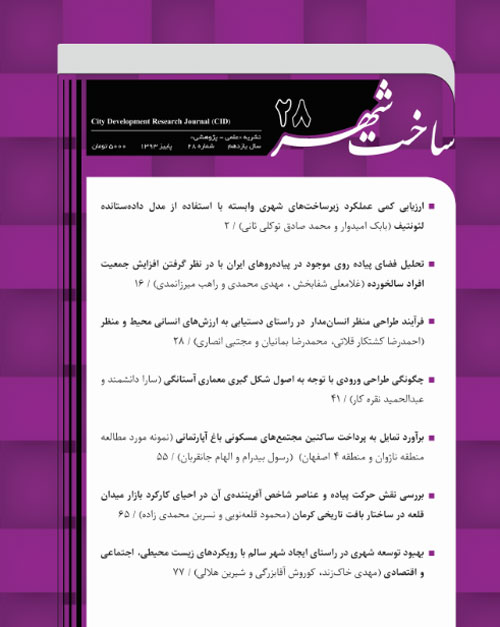Classification and Analysis of Traffic Network based on Structural Capabilities of Passages and Neighboring Land Uses
Author(s):
Abstract:
This research is conducted to evaluate and classify Shiraz urban network in response to traffic volume of the main passages, specifications and structural capabilities of this city using spatial arrangement. To achieve this aim, the relationship between network structure variables, land uses and volume of traffic in the central passages of the city are studied and also the differences of various classes with statistical tests are scrutinized. The capabilities of spatial structure of Shiraz central network are analyzed in regard to the average traffic volume representing the level of efficiency of physical structure and commercial land use that is the pivotal usage in studying the central parts of the cities. The classification of Shiraz urban network is finally based on spatial structure under the title of "Passages with maximum usage structural capabilities", "Passages with less traffic congestion than structural capacity", and "Passages with more traffic congestion than structural capacity". In each group, the influence of land use distribution on traffic volume is separately and independently measured. The results of the research denote that this form of network classification is different from classification based on physical specifications such as, the width of passages, capacity and level of service, and is therefore more advantageous in analyzing network loading method. Accordingly, more influential policies can be proposed being different from prevalent traffic policy-making in this city based on the development of passages and intersections.
Language:
Persian
Published:
City Development Research Journal, Volume:10 Issue: 20, 2013
Page:
66
https://magiran.com/p1143426


